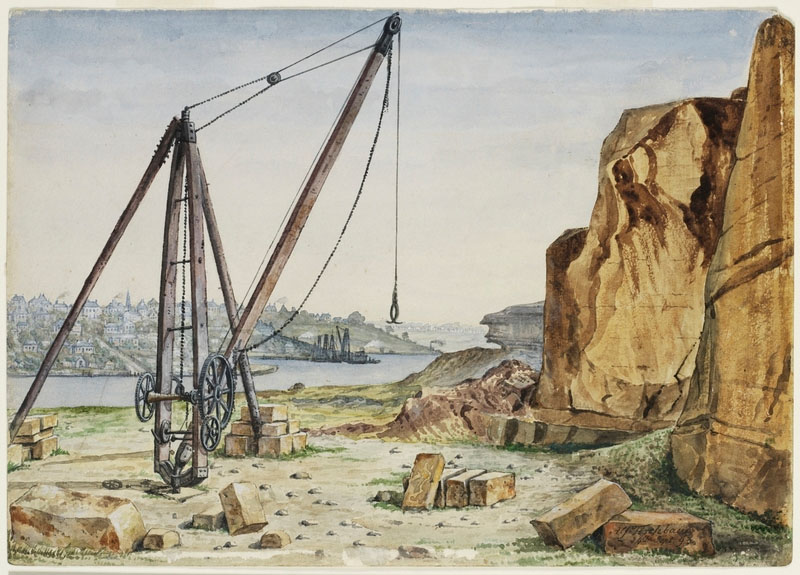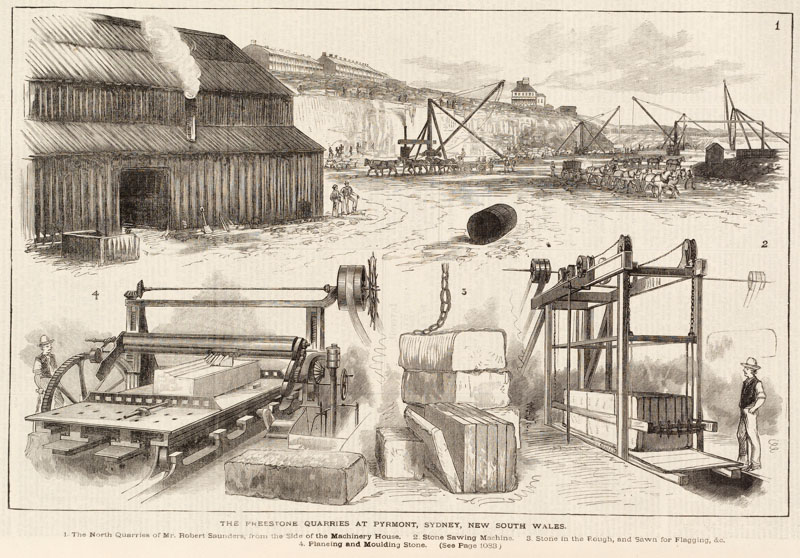Distillery Hill
Date Built: 2004
Architect: Denton Corker Marshall
The Distillery, The Quarry, Jones Street Townhouses, Refinery Apartments. Two 18-storey towers, 20 townhouses. Site of CSR distillery.
Distillery Hill
1850 - 1880
Surgeon Harris’s Ultimo Estate included most of the peninsula (the Macarthur property, Pyrmont, comprised only the northeast corner). In 1850 Ultimo was still a rural estate, including a deer park. Aboriginal people may have visited what is now Distillery Hill, looking over Pyrmont shipyards, east to Sydney, and north to Balmain, tracing the water-borne traffic that linked these settlements.
Ultimo was not subdivided until 1859, but some land was already leased to tenants who quarried stone for ships’ ballast. One of them excavated the site of The Quarry. Charles Saunders, who arrived in 1852, was immediately impressed by Sydney sandstone, especially the yellowblock of the peninsula, and acquired sites (probably including the site of The Quarry) and a wharf.
He bought the Quarryman’s Arms, which doubled as his family home. The McCredie Brothers also prospered as Pyrmont turned into a prodigious quarry.
The arrival of CSR in the 1870s triggered a great deal of local building, but it was large-scale public works that made the fortunes of the quarrymasters. Pyrmont sandstone was sought for the great public buildings that sprang up in Sydney during the gold rush era: the Colonial Architect insisted on it.
The best sandstone came from the western side of the peninsula, and the closest of the Saunders quarries Paradise was an immense operation running south of John Street, creating the escarpment which residents now overlook. In 1880 Saunders won the contract to supply sandstone for the Post Office, while the McCredie Brothers were awarded the contract for the Pitt Street front.
In 1881, mechanization was introduced at the Purgatory quarry. The removal of the rock, creating a level surface, was then used to stable the Saunders Clydesdales, in a building that had previously served as the New South Wales Art Gallery. The scale of the Saunders operation is suggested by the employment of 100 men, to quarry stone hauled away by a stable of 50 horses.
The Knoll and Distillery Hill emerged as landmarks as the surrounding rock disappeared.
An unwelcome side-effect of quarrying was the opportunity it presented for the illicit dumping of rubbish, including offal and other noisome and flammable material. In this informal tip, rag-pickers made a kind of living, and as an emergency measure, some residents supervised the burning of the material. Anyone who could afford to, moved away.














